FINAL FANTASY VII Main Theme with sheet music
Many of today’s musicians are, on some level, self-taught. Some of us are mostly or entirely self-taught musicians, which has become increasingly possible due to the abundance of free information and increasingly-accessible tools/instruments available today on the internet. Unfortunately, many self-taught musicians have a shared weakness: music theory.
Before we dive into the music theory deep end, I want to preface the following information with a few thoughts and notes on the context of these lessons and how you can actually benefit from them. ‘Theory,’ by itself isn’t helpful, but tools and application of knowledge can be indispensable. I believe that most people fail to learn (or fail to remember) music theory because they try to learn/are taught the theory without relevant context or meaningful application. If I want to learn to play pop songs on my guitar so I can sing those songs, do I need to learn anything about scales? No, probably not – and if I try to learn them I’ll either fail out of boredom or I’ll forget what I learn because it isn’t relevant to my goals. If I want to learn how to write a great melody, on the other hand, musical scales are the building blocks for melody and harmony and this information is extremely valuable to understand.
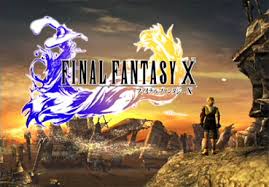
Best Sheet Music download from our Library.
I’ll do my best to explain why each lesson may be useful to you, but you don’t have to use every trick on this list. If there’s a specific effect from the examples below that you enjoy, use that lesson. Try adding it to your next piece, or try adding it to an old piece to breathe new life into it. If you like the effect and understand how to replicate it, it becomes part of your compositional “bag of tricks” and can be called upon later.
Enough context – on to the meat and potatoes! Today, we travel back in time to 1997 (yes, it’s been that long) to dissect the main theme from Final Fantasy VII. This theme is one of the more recognizable RPG themes ever written, and the motif from the piece is sprinkled throughout the entire Final Fantasy VII soundtrack which provides an excellent cohesion between the various different settings and events of the game. This piece is jam-packed with little musical tricks, so put on your learnin’ caps and buckle up. Ready? All right, everyone – let’s mosey.
Browse in the Library:
Or browse in the categories menus & download the Library Catalog PDF:
Lesson I: Using Intervals in Melody Writing
Why this lesson is important:
A great melody is priceless, and Final Fantasy VII’s main theme has a simple, beautiful melody. Writing an effective melody is all about balance, and writing a balanced melody can be very difficult when you’re actively trying to write an interesting melody. What makes a melody interesting is contrast and balance between the different elements within. Intervals are one of those critical elements you need to balance, and if you struggle with consistently writing melodies that you don’t hate you may want to take this lesson to heart.
The Lesson:
An interval is the distance between two pitches, but not all intervals are created equal. If terms like a “major third,” “perfect fourth,” or “perfect fifth” are completely foreign to you, I would pause here and watch this video by Joshua Taipale of Ongaku Concept to get up to speed in less than 8 minutes.
I could write pages on this topic, but for the sake of pacing and attention spans I’m going to zero in on the first part of the main melody of this piece and how intervals are being used intelligently. Within a melody, you can move from one note to another either by a step or a skip. Stepwise motion is when the distance between two notes is either a major or minor 2nd interval apart. If looking at a keyboard, if you were to play all of the white keys in ascending order you would be playing in ascending, stepwise motion. To put it another way, if the letter names of two notes are next to each other in the alphabet, it’s a step. Any interval larger than that would be considered a skip.
As a general guideline, melodies should contain mostly stepwise motion. The following 4-bar excerpt contains the main melodic material that the entire piece is built on, including the main motive of the game which appears in many forms throughout this piece and several others. The red lines indicate steps and the blue lines indicate skips. As you can see, this melody contains mostly steps but uses skips sparingly to create the most interesting moments of the melody:
The red lines are “steps,” and the blue lines are “skips”.
There are a few things that this accomplishes. First, it creates contrast within the melody by using a balance of mostly-stepwise intervals and a few intelligently-placed skips. If you wrote a melody that only used steps it would be more susceptible to sounding boring or predictable. If you wrote a melody that only used skips, it would generally be less appealing to most listeners because their ears would have a hard time following the sporadic motion as the melody jumped up and down all over the place. The phrases “variety is the spice of life,” and “everything in moderation,” should both be remembered when writing a melody. For more supporting evidence, listen to the first major melodic phrase of the Star Wars theme (9 steps, 6 skips) by John Williams or the first phrase of Nascence from Journey (12 steps, 5 skips) by Austin Wintory.
Please, subscribe to our Library.
If you are already a subscriber, please, check our NEW SCORES’ page every month for new sheet music. THANK YOU!
Another way to effectively use intervals is to emphasize a specific interval that is less common, more colorful, or larger than the rest. The first two measures of that same excerpt contains the main musical idea that echoes throughout this piece in different forms and creeps its way into several other tracks on the game. The interval between the first and fourth notes are the most prominent/important of the phrase and, arguably, the entire soundtrack. What interval does Uematsu use at the center of the game’s most frequently-heard track, reoccurring musical idea, and – as a result – the hero’s theme? A major 7th, of course. See what he did there?
The most prominent musical idea in Final Fantasy 7 is built around a major 7th interval.
How you can apply this lesson:
Whether you start writing a melody by improvising or simply writing down the ideas that pop into your head, you should see how you’re currently intervals and be mindful of any patterns that arise. You may find that you’re barely using stepwise motion, or that you’re skipping all over the place. Some people unknowingly write melody after melody without ever daring to use intervals larger than a 3rd or 4th, which is the equivalent of painting with only half of the color palette. Unless you’re incredibly clever, using the same intervals all the time will make it more difficult for new melodies to sound distinct from the rest. You can also proactively choose a specific interval to highlight something specific in a video game, like a character’s theme, a dramatic event, or specific emotion that recurs throughout the game.
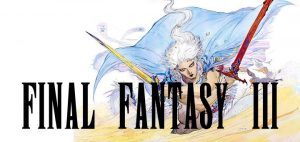
Lesson II: Basics of Keys, Scales, and which Chords to Use
Why this lesson is important:
If you’re a painter, you need to know which colors work together well. Music is similar, and if you haven’t had any formal music training you may struggle to find which chords and notes ‘work’ as you compose. By understanding a little bit about keys, scales, and the chords that fit together, you can quickly identify the most common chords available to you in the key that you’re writing in. In other words, this helps remove a lot of the guess-work that may leave you hunting and pecking at the keyboard until something sounds right.
This is kind of 3 mini-lessons crammed into one, but that’s intentional because they’re so closely dependent on one another.
The Lesson:
The “key,” or “tonality,” of a piece of music tells you a lot of information before you even hear the first note. If I’m writing a piece in the key of A Major, I know that ‘A’ is the root or home pitch of the piece and the A Major chord is the ‘tonic’ or home chord. Most of the time, a piece in A Major will start and end with an A Major chord or note. The first chord acts as an anchor for the listener, establishing ‘home base’ in their mind before you take them on a musical journey which will usually end with a return to home, as any good journey should. This is another one of those guidelines that is not hard-and-fast rule, but you will find this to be true with most western music from pop songs to Beethoven symphonies.
In FF VII’s theme, the majority of the piece is in E Major and the sections written in E Major will be based on the E Major scale – which means that most of the musical material within that piece will be built with the 7 pitches contained within the E Major scale. As a result, the primary chords used in the E Major sections of the piece are chords that you can construct using those same 7 pitches of an E Major scale. In E Major, your scale contains the following pitches: E, F#, G#, A, B, C#, D# and the chords you can build using those pitches are E Major (E, G#, B), F# minor (F#, A, C#), G# minor (G#, B, D#), A Major (A, C#, E), B Major (B, D#, F#), C# Minor (C#, E, G#), and D# diminished (D#, F#, A). While many songs and pieces stay strictly within these constraints, composers will often use this information as the foundation of their piece but explore musical ideas that reach past those limitations.
Most (or all) of a piece written in E Major will use the above notes and chords.
In the 40 bars of music that make up the main/most memorable sections of Uematsu’s piece (0:51 – 3:15 on the OST version), the melody adheres strictly to the pitches available in the E major scale. As for the chords, there is only 1 bar that uses chords containing pitches outside of the E Major scale in this section. Being limited to only 7 notes may sound… well… limiting, but as Uematsu has illustrated: You can color inside the lines and still make amazing music.
Now, all of those letter names can give you a headache if you’re constantly trying to remember which letters belong where. For this reason, roman numerals are frequently used to describe scale degrees and chord progressions. By using roman numerals to describe and think about music, we can focus on the relationship between chords, scales, and music and know that – no matter what key you’re in – those relationships stay the same.
For example, one of the most common chord progressions in pop music is I – V – vi – IV (upper-case = Major chord, lower-case = minor chord). No matter what key you’re playing and what note/chord you’re calling home, you can play this chord progression relative to your key. Thus, a I – V – vi – IV progression in the key of C Major would contain the following chords: Cmaj – Gmaj – Amin – Fmaj. The same I-V-vi-IV progression in E Major would be Emaj-Bmaj-C#min-Amaj. It’s way easier to analyze music and learn about music theory using Roman numerals because the Roman numerals stay the same no matter which key you’re talking about.
How you can use this lesson:
Whether you compose the melody or the chord progressions first, you’ll quickly establish a tonal center. If a new melody hits you while you’re humming in the shower and you run over the keyboard/guitar afterwards, you should be able to look at the pitches you’re using and determine which key you’re in. Once you’ve established the key, you know which scale to use and which chords belong with that scale as a result – thus eliminating the hunting/pecking method of randomly playing notes and chords until you stumble upon something that sounds like it might fit. You know what fits before you ever put pen to paper or hit the record button.
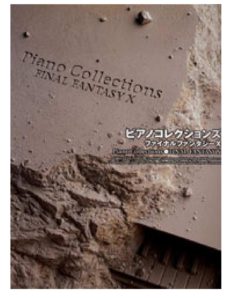
Lesson III: Cadences
Why this lesson is important:
Most music will do two things very well: create tension, and resolve that tension. Cadences help our music have a sense of resolution or finality at the end of a section or piece. If you’re already writing music, you’re already using cadences – you just might not know which cadences you’re using – and how often. This lesson helps you understand how to bring a piece/section back “home,” using a cadence, how you can trick your listeners and take them in an unexpected direction, and more.
The Lesson:
A cadence usually refers to the chord progressions located at the end of a passage or piece of music, and will often refer specifically to the last two, three, or four chords of that music. There are a few different types of cadences that we can use depending on the situation or desired effect, but for this post I’ll be talking about two specific cadences that appear in the main theme from Final Fantasy VII.
An authentic cadence is when a passage or piece ends with a V – I chord progression. This is the most common cadence because it’s a very strong progression that sounds very natural to most listeners.
A deceptive cadence, on the other hand, tricks the listener by setting them up to EXPECT an authentic V – I cadence… but ends on an unexpected chord instead, leaving the listener hanging. A commonly-used deceptive cadence is the V – vi cadence, during which the listener expects to hear a I chord after the V chord but instead hears the music resolve in a vi chord. Not only are they tricked, but they are tricked and left to wallow in a minor chord instead of a happy, resolute major chord. Mwahahaha…
After building up the excitement of the piece for awhile, Uematsu uses a deceptive cadence to end a section on a vi chord. Since we’ve heard a V – I cadence with this part of the melody several times by this point, the vi is a total curve ball – which makes it interesting. More importantly, this minor vi chord sets us up nicely for the next section, which is much darker and more ominous than the rest of the piece.
How you can use this lesson:
Obviously, if you’re looking to end a piece or section as resolutely as possible, you should probably use the authentic cadence: V-I. Having said that, you should also take a look at how often you’re using V – I cadences in your music already. If you find yourself ending every single piece you write with a V – I progression, it might be time to do a little more reading on cadences and harmonic progression so you can keep things interesting. Also, gaming music is unique in that a lot it loops – indefinitely! This creates an interesting challenge, and knowing a bit about cadences can help you manage them more effectively to end sections, pieces, or lead into looping sections. For a great example of a unique cadence leading into a loop, listen to Barret’s theme. Pay close attention to the very unconventional cadence which throws a very desperate, pained emotion into the music for about 15 seconds before the otherwise positive-sounding piece repeats itself.
Finally, it’s important to keep the melody in mind when approaching a cadence to avoid a train wreck. Your ear will probably avoid this problem for you if you’re writing the melody and chords at the same time, but you don’t want to accidentally paint yourself into a corner with a melody that’s very difficult to harmonize at the end of a section. Regardless of how cool the last 2 bars of melody may sound by themselves, your entire piece may suffer if you’re forced to harmonize them with a weak cadence. This is especially important when composing the melody by itself before touching the harmony, as it will be more difficult to “hear” how a melody will lead from one section into another (Happily, I’ve found this to be one of those things that you can hear when you’re doing it well, but easily miss when you’re doing it poorly).
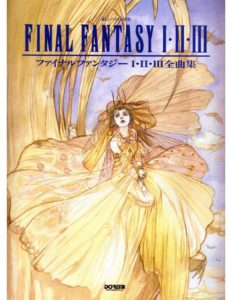
Lesson IV: Ostinatos (or, Ostinati)
Why this lesson is important:
If you’ve listened to any video game music, you’ve probably heard several ostinatos. Ostinatos are massively useful – especially in game audio – because they can act as an anchor for the listener while simultaneously driving the rythmic pulse of the music. Ostinatos probably made up a large percentage of early game audio, which needed to leverage repetitive rhythmic patterns to provide a harmonic progression while supplementing the percussion of the music. If you’re writing chip tune music, you may already be using ostinatos without even realizing it and if you’re aware of what they are and their function you can make more deliberate choices in your tracks. For more “modern” game scores, the function of providing an anchor – even for a single section within a larger piece – becomes a powerful tool to create contrast or provide a thematic effect without actually having a theme.
The Lesson:
What is an ostinato, exactly? Basically, a musical phrase that repeats itself throughout a piece of music – usually within the same instrument/voice, and often at the same pitch. Ostinatos might take several forms, including a baseline pattern that repeats itself across a chord progression, a stand-out percussion phrase, or the left-hand piano part in a good old fashioned boogie. This may seem like an extremely broad definition, but hopefully a few examples can help reign us in a bit.
In Final Fantasy 7’s theme, we’re going to focus on the section that follows the 2nd video from Lesson III above. After Uematsu dumps us into a minor key, the piece transitions from a hopeful, lush sound to a very ominous, foreboding section. In my opinion, the use of an ostinato in the piano (OST version) or bass strings (orchestral version) creates most of the tension that can be felt during this section.
Not only does this little phrase reinforce the fact that we’re in a minor key, but it stays on the same pitches throughout most of the section to specifically reinforce the Emin chord (which is a “i” chord, using Roman numerals). In addition to reinforcing this new tonality, this creates tension throughout the section as the ostinato continues to reinforce an E minor chord while the rest of the music throws in chords like a crunchy-sounding Emin6 (an Emin chord, plus a C# note) or an F#maj chord.
Ostinatos are extremely prevalent in video game music. In the early days of game audio, the hardware limited composers to a handful of channels and possible sounds to work with. For example, the NES had 5 available sound channels – two of which were usually reserved specifically for the lead melody and harmony. That leaves 3 channels/lines to establish the harmonic progression AND the drive the pulse of the music. Yikes. Keep in mind that each of these channels were capable of playing a single note at a time, which provided an even greater challenge!
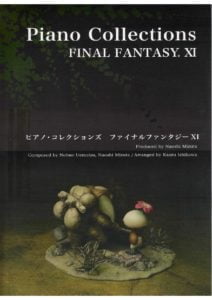
Lesson V: Borrowed Chords
Why this lesson is important:
As stated earlier, a standard piece of music will be composed almost entirely of the same 7 chords made of the same 7 pitches. While you can build an entire career within those constraints, with a little extra sophistication you can bring a little more color to your music by using Borrowed Chords. Basically, this gives you more chords to choose from when harmonizing a melody.
The Lesson:
A Borrowed Chord is a chord borrowed from the key parallel to the one you’re writing in. Parallel keys are major and minor keys that share the same root note. E Major and E minor are two different keys that use two different scales, but they both use E as their root note. Because they use different scales, they use different pitches and – since chords are built with the pitches of the scale – they contain different chords as a result. The parallel key to E Major is E minor, which contains the chords E minor, F# diminished, G major, A minor, B minor, C major, and D major. Why not ask your good neighbor, E minor, if you can borrow a cup of sugar and a C Major chord for a little while? That’s what neighbors are for.
Remember in the last lesson when I said that Uematsu uses chords in E Major for the main sections of the piece with the exception of 1 bar? In that single bar, he adds a little magic by harmonizing the melody with chords borrowed from E minor. Boom. Magic.
So, why is this so special? There are a couple of reasons that this particular usage of borrowed chords is a fantastic example. Assuming that the melody was composed before the chord progression, Uematsu – whether he noticed or not – could’ve easily found himself painted into a corner if he didn’t know that borrowing chords was possible. If you follow through a textbook lesson for learning to harmonize a melody, you’ll first be taught to harmonize with chords that contain the melody’s pitch at any given time. If the melody is playing a C, the triad chord you choose has to contain a C.
If Uematsu chose to harmonize his existing melody with chords containing the melody’s pitches, he would’ve been limited to a small handful of options – none of which produce a particularly strong or remarkable chord progression. Happily, a lot of the rock music that likely influenced him used this technique and other similar tricks to keep things interesting.
How you can use this lesson:
Take a look at a piece – either an old one, a new one, or the next one you haven’t even started yet. Figure out which key it’s in, and then look up what chords are available from the parallel key. Remember – if you’re writing in C Major, the parallel key is in C minor. A quick Google search will help you find a list of the chords available in that parallel key. Next, figure out which chords you’ve been using behind your melodies and experiment with substituting chords from the parallel key – especially when you feel like the chord progression could stand to be a little stronger.

Lesson VI: Common-tone Modulation
Why this is important:
You could write music for years without ever using modulation, but adding a modulation – or key change – to a piece of music creates a very dramatic effect. You can use a modulation to create an epic, rising effect (see Lesson VII). Alternatively, you can use a modulation to go from a major (happy-sounding) key to a minor (sad/ominous-sounding key) as Uematsu did in Lesson III, where he uses a deceptive cadence to pivot us into a minor key. Regardless, the use of modulations in music is not only common amongst great composers and song writers – it’s fun and interesting! A very easy-to-use technique for modulation is called common-tone modulation, and so we’ll start there.
The Lesson:
Imagine that your favorite TV show has just aired its series finale, and the network has decided to produce a spin-off show that – while belonging to the same genre as the original show – is very different than what you’re used to. How do they pull off these new shows without losing the entire audience from the original series, thus avoiding the need to start over from scratch? By leveraging a character who existed in the first series and will continue on in the second series. This character provides an anchor of familiarity and a point of reference for the new series, and a common-tone modulation works in a similar fashion.
Modulation, as I stated earlier, occurs when the tonal center of a piece of music changes. This results in the use of a new root note, scale, and set of chords as per Lesson II above. While this effect can be totally awesome to use in your music, you shouldn’t just dump your listeners into a new key without an anchor or some sense of familiarity. That would be very jarring and unpleasant to listen to, even if the average listener can’t articulate why it’s unpleasant. If you don’t want your modulation to sound like you accidentally played a wrong chord and decided to run with it, you need to use an anchor to pivot your piece into the new key.
In a common-tone modulation, you leverage a repeated or sustained note from the original key as a bridge to carry the music into a new key which also contains that note. For example, if you’re in the key of C major and ending a section with a C major chord, you may modulate into G major by way of the G note, which is found in both the C major chord and the G major chord. In OST version of Final Fantasy VII’s theme, a commom-tone modulation is used to raise the piece from Emajor into Gmajor, by using B as the common-tone.
How you can use this lesson:
This technique isn’t rocket surgery, but it’s very effective so long as you’re using it very deliberately. To begin using this technique, I would recommend choosing (or writing) a piece of music with a strong melody or a very catchy ostinato (think Jenova). This technique works well with both looping- and scored/cued music that may accompany a scene, trailer, or event in the game. Because video game music is short-form music by nature, the modulation point should be chosen very carefully and would best be used to transition to a new section or to repeat an existing section of music as Uematsu did with the above excerpt. By modulating and repeating the exact same musical material in a new key, an emotionally lifting effect is achieved while content is recycled in an interesting way.
Finally, keep in mind that – because most video game music loops – if you modulate to a new key you will ultimately have to modulate back to the original key at some point. Make sure to plan/write accordingly!
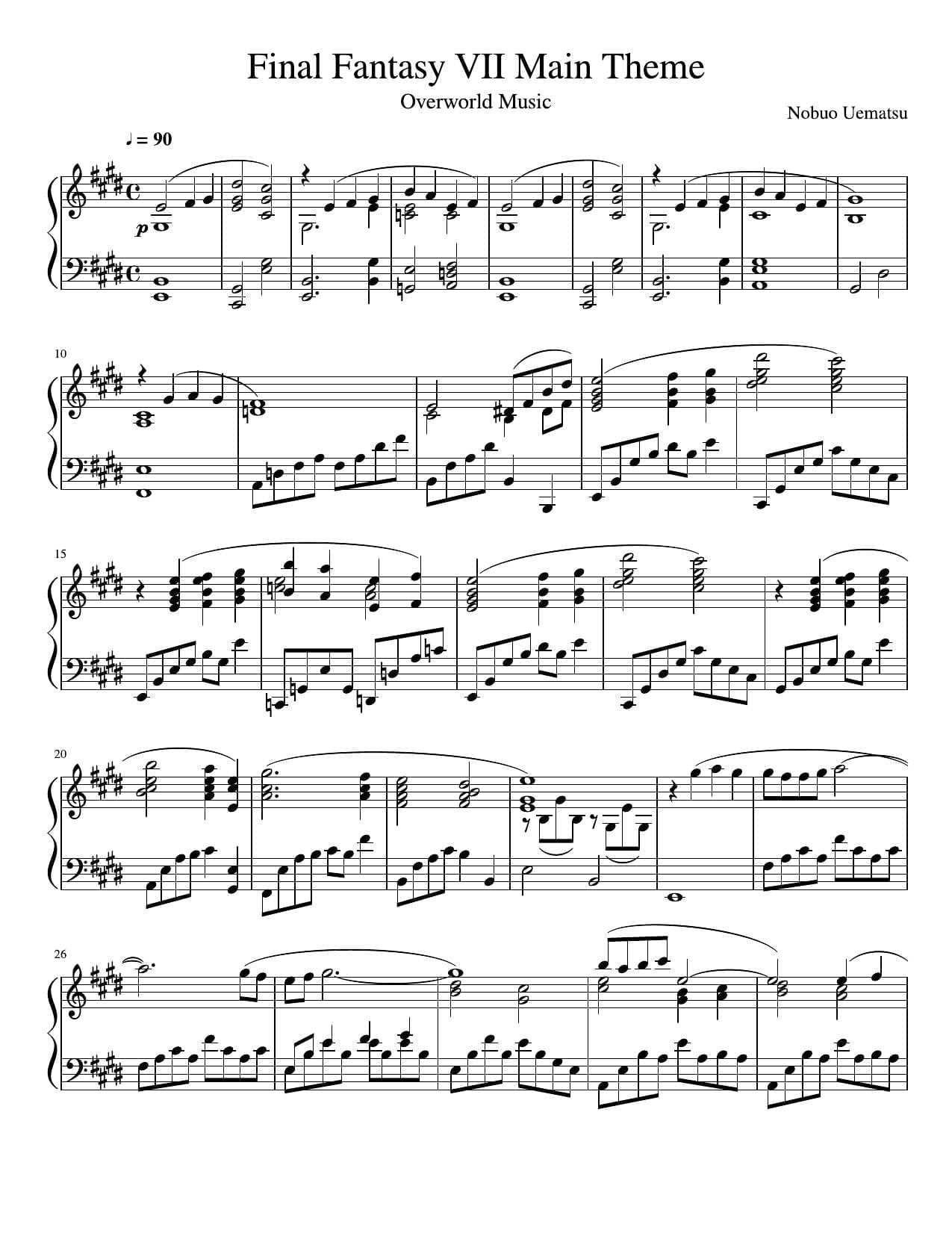
Lesson VII: Common-chord Modulation
Why this lesson is important:
As discussed in Lesson VI, modulation creates variety in your music – which is especially important in music that will be heard repeatedly throughout gameplay. The more tools you have at your disposal to keep it interesting for the player, the better. Common-chord modulation is another method for changing keys in your music, and if you’ve become comfortable with the other lessons in this post you have all of the knowledge you need to execute this technique effectively.
The Lesson:
A common-chord modulation is achieved by transitioning from the original key to the new key through a chord that occurs in both keys. Just as a common-tone modulation uses a shared tone to anchor the listener through the modulation, a common-chord modulation uses a shared chord – called the pivot chord – to make the transition between keys.
For example, you’ll remember from Lesson II the key of E Major contains the following chords: E Major, F# minor, G# minor, A Major, B Major, C# Minor, and D# diminished. If I wanted to modulate to the key of D major, I could use any chord that occurs in both keys as my pivot chord. The key of D major contains the following chords: D major, E minor, F# minor, G major, A major, B minor,and C# diminished. This gives us two possible options for our pivot chord – F# minor and A major – because these chords exist in both keys.
For this example, we’ll actually be looking at the same exact place in the music as we did in Lesson VI – but not the version found on the original soundtrack. This time, we’re going to look at how that modulation occurs in the orchestral version. Recall that in Lesson VI above, Uematsu uses a common-tone modulation to make the jump from E Major to G major on the OST version of the track. On the Final Fantasy VII: Reunion Tracks album released in 1997, Uematsu collaborated with Shiro Hamaguchi to arrange this theme for a full orchestral performance. It’s a gorgeous arrangement with some additional ear-candy built into it, including the new common-chord modulation from E Major to G major.
BUT, that’s not all. The real magic is which chords they used as the pivot chords. Remember the borrowed chord example from Lesson V, when Uematsu borrows a bVI and a bVII chord from the parallel minor key to spice things up a bit? I’m not sure if this was by original design or a happy coincidence that was allowed to happen because of the keys Uematsu chose to use in the original soundtrack, but they were able to use the borrowed bVI and bVII chords as the pivot chords! It’s a little easier to digest if you see the Roman numeral analysis and hear the modulation in the video below: http://www.youtube.com/embed/PUyfi6KodzY?controls=0&showinfo=0&rel=0
See what they did there? In E Major, that same bVI-bVII chord trick we’ve been hearing uses C major and D major chords. The destination key of G major contains both of those chords (IV and V chords, respectively), and as a result they use the bVI – bVII chord progression in E major AND as a IV – V – I progression in the new G major key (an authentic cadence, as per Lesson III). Mind. Blown. Effectively, they combine Lessons II, III, and V in order to pull off the common-chord modulation. See accompanying illustration:
How to use this lesson:
Choose a piece you’re working on, or one that you’ve already finished. Decide where you’d like to place a modulation (perhaps repeat a section that already exists?), and use this Wikipedia page to identify the relative minor and closely-related keys. Choosing from these closely-related keys will be easier to modulate to, as they already share several common tones/chords. While using borrowed chords to modulate to a new key is a neat trick, it’s not necessary to try until you’re comfortable with a basic common-chord modulation.
Next, all you have to do is pick a key you’d like to end up in. Experiment by playing your melody/ostinatos in the original key followed immediately by the destination key. Remember that each modulation will have to return to the original key if your music is looping, so you’ll have to modulate twice.
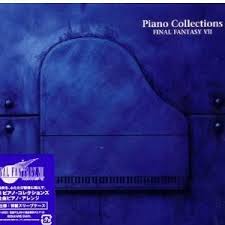
Conclusion and Next Steps:
Phew! Still with me? That was a lot of information, and you should not try to implement all of these at once. Get comfortable with one new technique until you’ve internalized it before moving on to the next one. Just like in an RPG, it’s all about gradual progress and accumulating new skills, abilities, and Materia along the way. Take your time, and have some fun with it.
Final Fantasy game & Music
Final Fantasy VII is a role-playing video game developed by Square (now Square Enix) and published by Sony Computer Entertainment as the seventh installment in the Final Fantasy series. Released in 1997, the game sparked the release of a collection of media centered on the game entitled the Compilation of Final Fantasy VII. The music of the Final Fantasy VII series includes not only the soundtrack to the original game and its associated albums, but also the soundtracks and music albums released for the other titles in the collection.
The first album produced was Final Fantasy VII Original Soundtrack, a compilation of all the music in the game. It was released as a soundtrack album on four CDs by DigiCube in 1997. A selection of tracks from the album was released in the single-disc Reunion Tracks by DigiCube the same year. Piano Collections Final Fantasy VII, an album featuring piano arrangements of pieces from the soundtrack, was released in 2003 by DigiCube, and Square Enix began reprinting all three albums in 2004. To date, these are the only released albums based on the original game’s soundtrack, and were solely composed by regular series composer Nobuo Uematsu; his role for the majority of subsequent albums has been filled by Masashi Hamauzu and Takeharu Ishimoto.

The Compilation of Final Fantasy VII began eight years after the release of Final Fantasy VII with the release of the animated film sequel Advent Children in 2005. The soundtracks for each of the titles in the collection are included in an album, starting with the album release of the soundtrack to Advent Children that year. The following year, Nippon Crown released a soundtrack album to correspond with the video game Dirge of Cerberus, while Square Enix launched a download-only collection of music from the multiplayer mode of the game, which was only released in Japan. After the launch of the game Crisis Core in 2007, Warner Music Japan produced the title’s soundtrack.
The latest album in the collection, Before Crisis: Final Fantasy VII & Last Order: Final Fantasy VII Original Soundtrack, was released by Square Enix the same year as a combined soundtrack album for the game Before Crisis and the animated movie Last Order.
The original music received highly positive reviews from critics, who found many of the tunes to be memorable and noted the emotional intensity of several of the tracks. The reception for the other albums has been mixed, with reactions ranging from enthusiastic praise to disappointment. Several pieces from the soundtrack, particularly “One-Winged Angel” and “Aeris’ Theme”, remain popular and have been performed numerous times in orchestral concert series such as Dear Friends: Music from Final Fantasy and Tour de Japon: Music from Final Fantasy. Music from the Original Soundtrack has been included in arranged albums and compilations by Square as well as outside groups.
